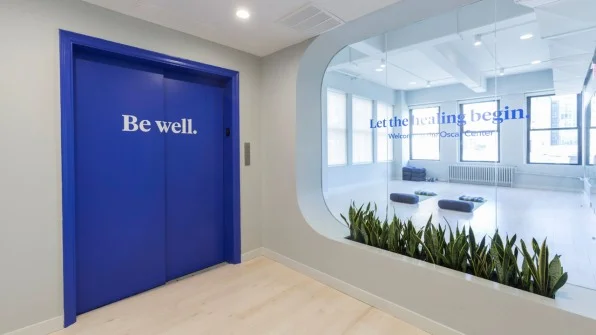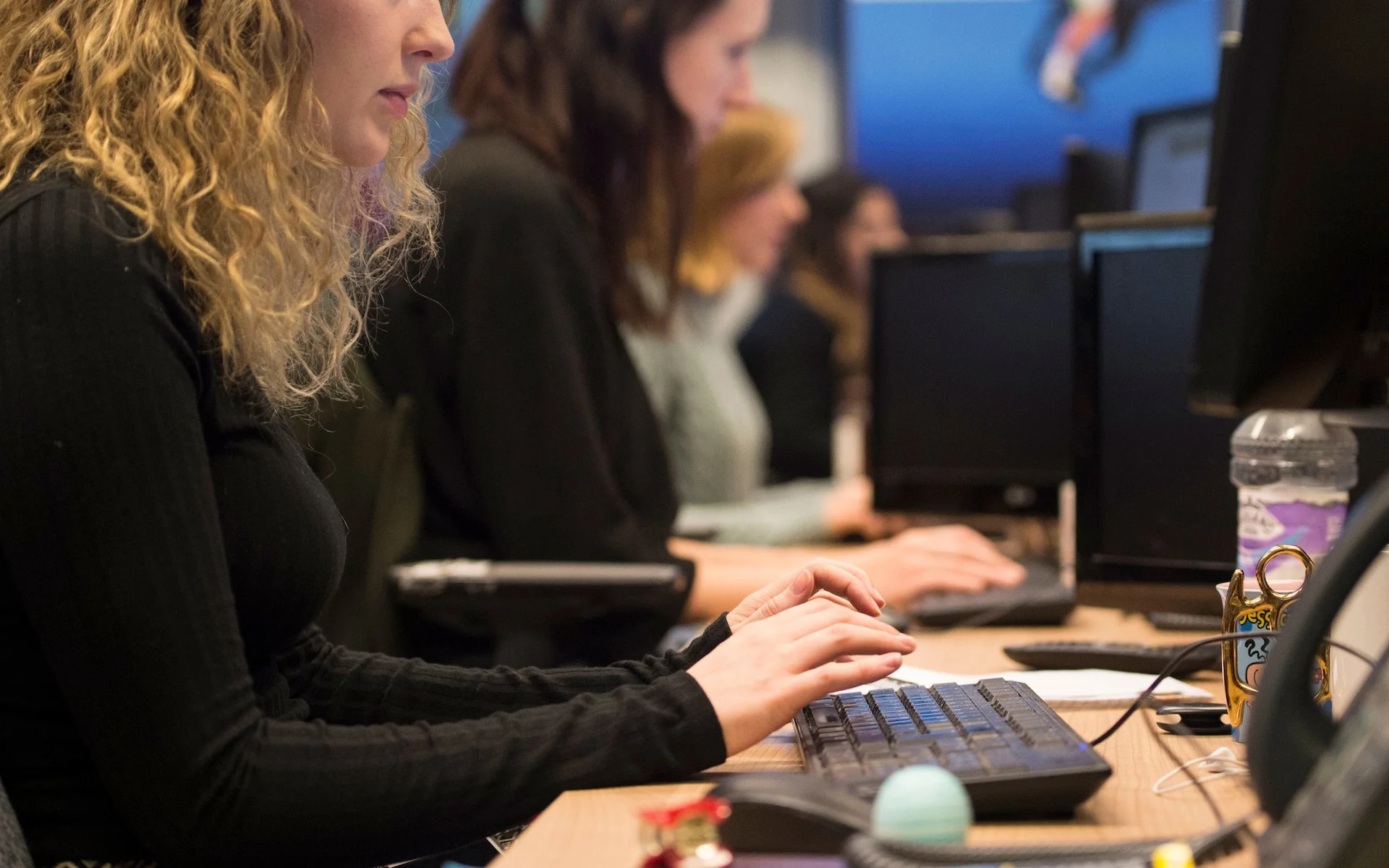NextGen Work is a global phenomenon. Emerging markets like India and Mexico are leading the way with the greatest openness to freelance, contract, temporary or independent contract work (97 percent), with mature markets – including the U.S. (94 percent), with the UK and Australia– close behind (90 and 92 percent respectively). Germany, Netherlands and Japan are more resistant to NextGen Work.
Watch: Open offices are overrated
Open offices have been around a surprisingly long time. But they're relatively misunderstood for their role in workplace culture.
New Talent 2017: Float Studio’s Fresh Approach to Office Design for Start-Ups
Adeptly avoiding the clichés of office design for start-ups, Float Studio instead creates spaces that capture each company’s founding essence—all on a tight budget.
What's driving the Rise of Ancillary Spaces?
Research tells us that the workplaces people want to come to look like the one above—offices with plenty of bright, informal public areas and less space set aside for personal workstations.
When Open Office Works And Doesn't Work For Tech Offices
From open office to bringing the outdoors in, tech companies have long been trendsetters in office design.
Gen-Zers Will Soon Be Your New Hires; Here’s What They Want in a Workplace
Much like the hype around Millennials, the entrance of Gen Z into the workforce promises to once again push boundaries, reshape office design, work style and how companies and buildings themselves seek to remain relevant and competitive in their respective industries and markets.
The current approach to creative workplace design relies on faddish, ineffective ideas
A new research paper published in the Journal of Corporate Real Estate claims that while many organizations are focussed on creating workplaces that foster creativity, the results tend to ignore nuances about what makes people creative and instead focus on faddish ideas and playful, domestic design features to invoke ideas of creativity that may or may not be effective in practice
Choosing the Best Color for Your Office: Green
With the increase in awareness of biophilia, the theory that there is an instinctive bond between humans and nature, today’s workplaces place an emphasis on bringing elements of nature into the office. Research by Steelcase further proves that incorporating green colors can help improve worker wellbeing. Since we often see green naturally in the world, Wasabi’s organic and vibrant qualities have the ability to relax and awaken us. Green symbolizes life and vitality, bringing a breath of fresh air into indoor areas.
Airbnb uses current listings to theme interiors of expanded San Francisco headquarters
Home rental website Airbnb has taken cues from its listings around the world when designing additional office spaces at its headquarters in San Francisco.
October 4, 2017 Convergence of work and life defines September London workplace design shows
So was the workplace section of the show indicative of the most talked about issues in the field of contemporary office design? The answer is not really. While the majority of people in offices still spend their working lives at bench desks sitting on task chairs – a fact reflected in the products on show from Hands, Orangebox, Flokk, Nowy Styl and Century Office – there was little to highlight one of the two most talked about issues in the workplace right now; sit – stand desking.
How To Design “Branded” Environments That Don’t Make People Gag
When companies try to create “branded” experiences for their consumers, the results can be seriously cringeworthy. Anyone who’s ever stepped inside a company’s corny, hashtag-laden “activation” knows that’s not the way to make your brand more meaningful.
Is The Open-Office Plan Dead?
“Tenants want open floor plans but also a place to collaborate and a place to have a private conversation,."
Open-plan offices don't work and will be replaced by the ‘coffice’, says BT futurologist
They were supposed to generate a sense of camaraderie, enhance teamwork and encourage an open flow of ideas between colleagues after decades of segregation in booths.
The Rise of the Multibillion-dollar Corporate Campus
Tech giants like Apple are building vastly expensive headquarters – but university-style spaces have been used by companies for decades, write Agustin Chevez and DJ Huppatz.
Only half of employees think their workplace supports productivity
Research by Oxford Economics has suggested that open-plan office designs were at odds with the working style of many non-managerial staff, with 53 per cent of employees surveyed saying the ambient noise in such workplaces reduced both their satisfaction and productivity, and 41 per cent adding that they did not have the necessary tools to cut out the noise and focus on their work.
Architects & Designers Confirm the Importance of Active Design in Tech
Interestingly enough, we found that tech companies are dealing with the same wellness issues as the average organization, but many are addressing the issue through design strategies and innovative solutions.
Making the Private Office More Effective
Private offices are usually thought of as traditional work spaces that force some difficult trade offs: workers get more privacy but less interaction with others, plenty of quiet concentration but no collaboration, and great image and status but limited function and flexibility.
Biophilic Design: How to Channel the Outdoors in Your Workplace
"The need to connect with nature is embedded deep within our psyche. As a species, we have divorced ourselves from our natural habitat: the open plains. Just as zoo animals and lab rats that are placed in sterile, unenriched environments show signs of physical and mental stress, so do humans when forced to work in lean, sterile and unenriched workplaces.
Watch: Microsoft Envision Highlights Steelcase Creative Spaces
Microsoft Envision 2017 showcased cutting-edge technology and its impact on the cars we drive and the places we work. Keane and Gavin showcased Creative Spaces — an ecosystem of technology-enabled spaces designed to support all the stages of the creative process including focus, co-creation, ideation, experimentation and respite. The two leaders talked about their shared mission — to help people unlock their potential. They also demonstrated how by working together their teams designed spaces that help people get the most from their technology, allowing them to easily move from one setting to another without interrupting the flow of creative work.
Moving Beyond Open Plan Spaces
The open plan concept popular more than a decade ago has since been enhanced with smarter, more advanced planning models. Not only has the nature of work evolved dramatically since the heydays of the open plan in early 2000’s, so too has our understanding of how workspaces can foster engagement, satisfaction, and productivity.

























